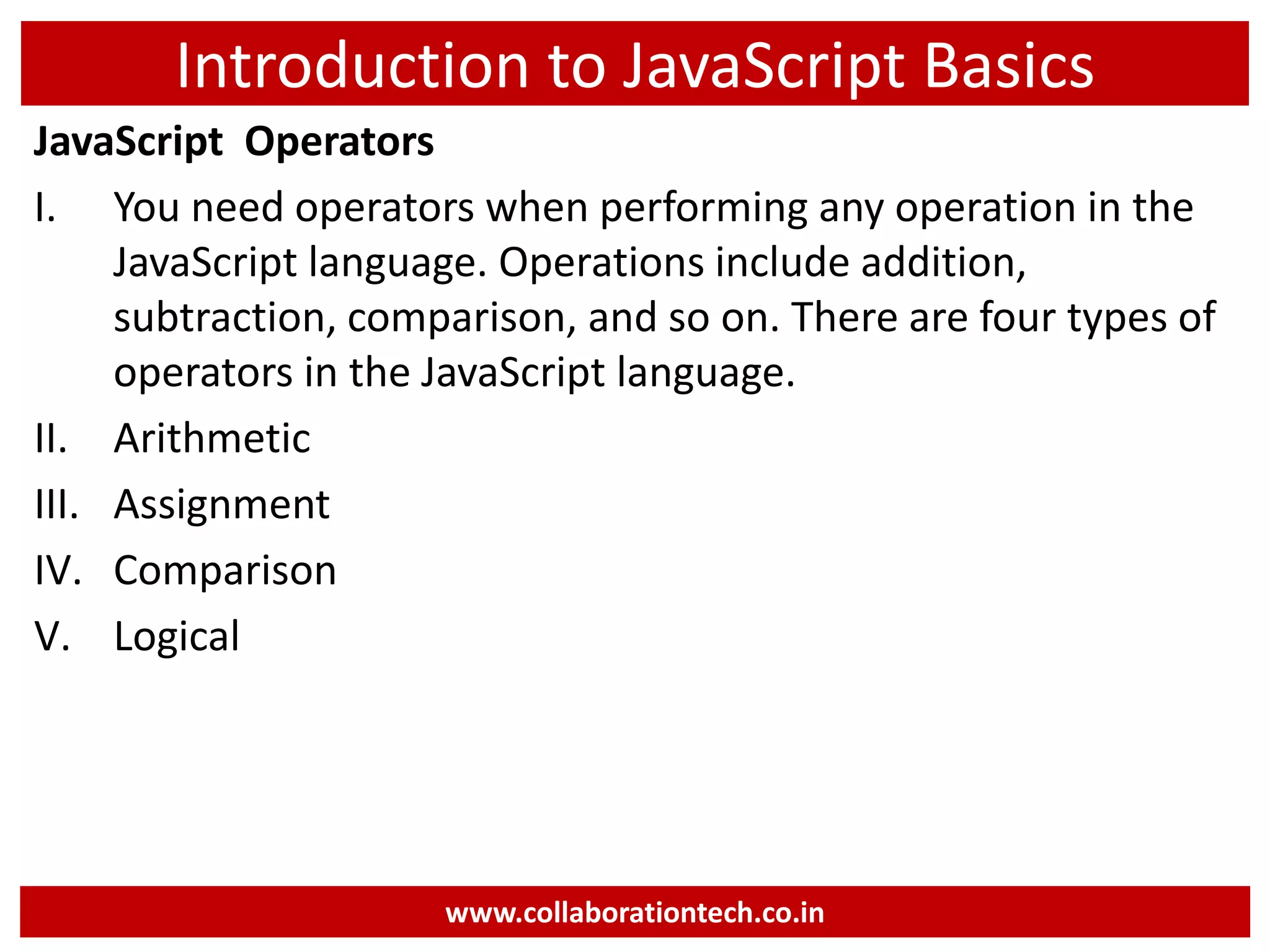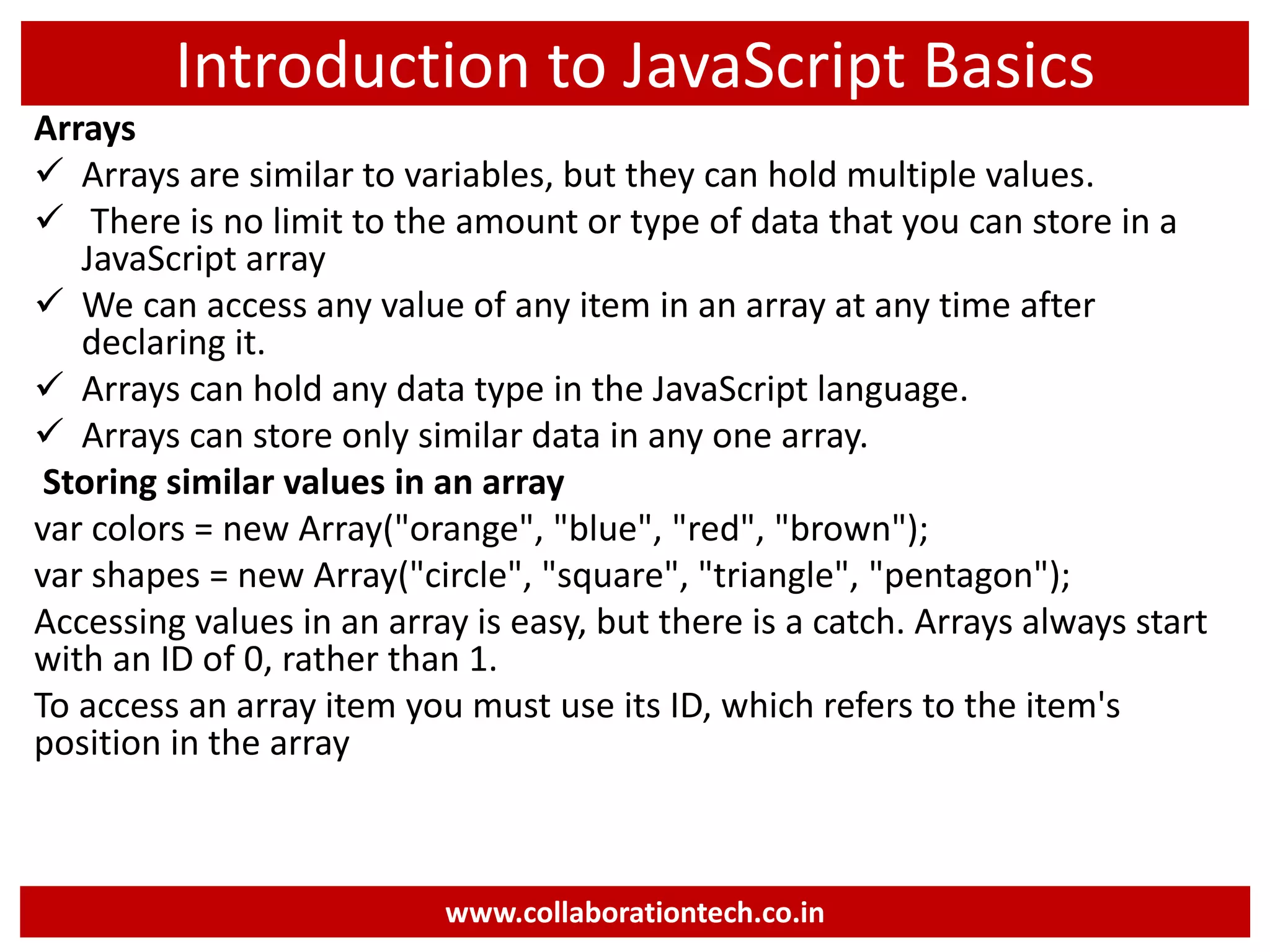This document is an introduction to JavaScript programming, covering its basics, including variables, operators, arrays, control structures, and functions. It describes JavaScript as an interpreted and lightweight scripting language commonly used for creating dynamic web pages. The document also includes examples of using JavaScript within HTML code.











